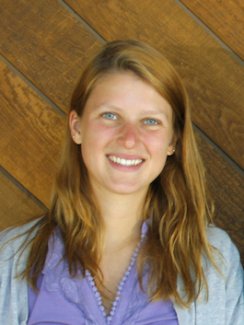Nicole Dear
Terrestrial Ecology Intern
Project: Successional changes in soil microbial communities in a Northeastern US hardwood forest
Nicole's Mentors: Jacob Parnell, Michael SanClements

Nicole Dear, 2014 Terrestrial Ecology Intern
About Nicole
Nicole Dear graduated from the University of Michigan in 2014, with a major in microbiology. She has always had an interest in science and nature, and used her NEON summer internship to explore both. Recognizing the potential of big science and the beauty of the Colorado outdoors, Nicole feels her time at NEON has been “a really great learning experience, both inside and outside of work.”
Q&A
Last summer I worked at the University of Michigan Biological Station and they had a NEON representative come and talk about the organization. After the talk I was still really curious, so I went on the website and saw they had an internship program. Then I applied!
I came to school wanting to study environmental science and then decided I wanted to pursue some of the more difficult science classes. So I changed my major to microbiology but still kept an ecological focus. I also work in a biogeochemistry lab and a marine virology lab.
I don’t think there was a defining moment, but I was always good at science in school and was interested in nature and the environment.
I think I do. I’m not sure if that will be research per se, but I do want to go on to get a master’s in science. I just don’t know where that will be yet.
NOTE: Nicole has since started Graduate School at the University of Michigan for International Health Epidemiology.
I think it made me more interested in continuing in science. Before I had always done academic, hypothesis driven research. That’s what I had done in school and what I do in my lab. I didn’t really like that. But NEON is a whole different way of looking at ecology that is really cool.
Well, being in Boulder was pretty cool. Also the amount of young people here who are enthusiastic about NEON and their role in the project is a cool thing to be a part of.